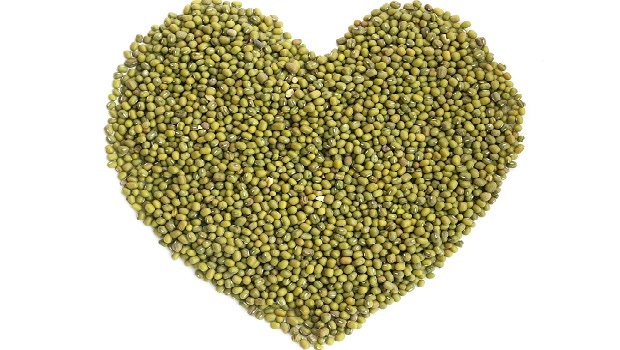The global protein ingredient market for human nutrition is fragmented, but overall, dairy and soy-based proteins rule the roost. However, that is changing as many new plant sources have made a splash into the market in recent years, and none more so than pea protein.
October 12, 2015

The global protein ingredient market for human nutrition is fragmented with many local players serving only parts of the market; but, overall, dairy and soy-based proteins rule the roost. However, that is changing. Many new plant sources have made a splash into the market in recent years, and none more so than pea protein.
Most of the pea protein ingredients in the market today are made from dry whole yellow peas, which is a cotyledon seed-type legume that has a smooth seed coat. Strains of yellow peas include Eclipse, Mozart, DS Admiral and Miami. Yellow peas thrive in cooler growing conditions, which is why peas are a common crop grown during the cooler months in the northern United States, Canada, Europe and China. Specifically, Canada, Russia and China account for 62 percent of yellow pea production, while India accounts for 46 percent of imports and Canada for 62 percent of exports.
Peas are rich in protein—it typically makes up approximately two thirds of pea content, but some strains can be as low as 25 percent. Pea proteins are obtained from the bean milling process where the peas undergo a cleaning, drying and de-hulling process. The cleaned dry matter is then milled into flour-containing food ingredients, such as protein, starch, fat and fiber. Pea protein concentrates go one step further in the production process where the final product flows through additional fractionation, purification and drying processes.
Although dry pea protein ingredients are not the major driver for whole yellow pea production, they command the highest value as a food product, when compared to direct consumption, flour and starch. In 2014, 20,700 metric tons of pea protein ingredients were shipped to end users, corresponding to US$29.9 million in manufacturer sales. High demand for alternative plant proteins, such as pea protein for nutritional applications, drives market growth. The overall plant protein market is poised to grow at 11.3 percent, annually, to 2020. The demand for processed pea protein is growing the fastest in North America (the United States), which dominates production and exports (Canada). Demand in the rest of the world (China, for example) is also witnessing rapid growth; these countries import a significant amount of whole yellow peas.
Proteins have always benefited from their healthy image among consumers, but historically, protein supplementation was purely associated with muscle building. However, this perception is beginning to change for U.S. consumers. Driving the demand for pea protein ingredients is the simple fact that food product formulators have taken active notice that added protein is perceived as a healthy choice among consumers, and consumers are willing to pay a premium for this added benefit. This trend is especially strong in the sports nutrition segment. Increasingly, U.S. consumers are embracing the evidence that shows the diverse role of proteins in achieving optimal health, where one-sixth of U.S. consumers used a protein-fortified product in the last 12 months in 2013. This rate is expected to only have increased further to today.
In terms of market structure, approximately 20 pea protein ingredient processors are active in the market globally, all of which primarily compete on cost effectiveness, an effective and efficient distribution network, and product qualities, such as percent of crude protein content, which meets and exceeds industry standards. The major source of competitive advantage in the pea protein ingredient value chain is whether the ingredient processor has direct access to cost-effective raw material whole peas.
The pea protein ingredient value chain can be described as followed:
Dry whole yellow pea seed supplier—company and/or co-operative that supplies processed seed for growers;
Dry whole yellow pea grower/farmer— small, medium, large, and very large farms that cultivate this crop from October to February;
Dry whole yellow pea processor—company and/or co-operative that purchases harvested peas directly from a grower and/or pulse elevator and/or trader/broker (the peas undergo various levels of processing, which is subject to the organization’s end markets, and in some cases, this organization is also a pulse elevator and a trader/broker);
Dry whole yellow pea storage/elevator—company and/or co-operative that purchases harvested peas directly from a grower and/or trader/broker and stores the same in a holding facility (in some cases, this organization is also a processor and a trader/broker);
Dry whole yellow pea trader/broker—company and/or co-operative that buys and sells harvested and/or processed peas (organizations have capabilities for several other pulses and some operate in global trade); and
Dry whole yellow pea ingredient processor—company and/or co-operative that undertakes pea milling and additional processing activities, such as fractionating flour into protein, starch, fiber and fat (in some cases, this processor is a multi-purpose food and feed ingredient processor and manufacturer).
Overall, the primary challenge facing the pea protein ingredients segment is its current production capacity levels and the need to expend capacity in order to effectively compete with soy-based plant protein ingredients. In order to meet growing pea protein demand, protein and food ingredient companies are looking to utilize North America’s high whole yellow pea production by increasing mill processing capabilities within the United States and Canada. Furthermore, China is also well positioned to meet pea protein demand due to it being a major consumer of pea starch. In addition, food companies in Europe are currently looking to partner with cost-competitive processing firms or establish overseas operations in the United States, Canada and China as a result. With the increasing demand for value-added protein ingredients through protein-fortified food and beverage products, the pea protein ingredients market is clearly in the position to disrupt the protein ingredients space.
About the Author(s)
You May Also Like




.png?width=800&auto=webp&quality=80&disable=upscale)